The decorative aspect of tiles is often overlooked in favour of their basic practicality, but if your bathroom or kitchen is predominantly white and contemporary looking, then using tiles as a bold decorative touch is a great way to add a unique and dramatic look.

Take your inspiration from countries like Portugal and Morocco, where entire buildings are tiled, and use your imagination to create individual looking rooms.
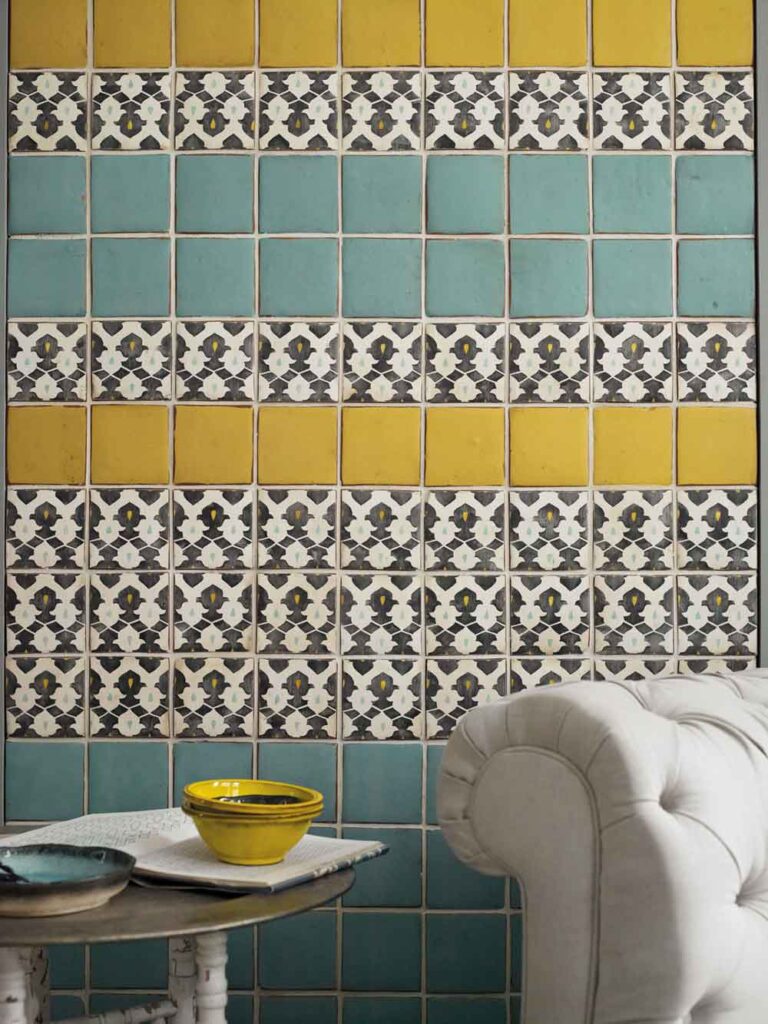
First off – who says the tiles have to be all the same? Buy a few different designs in toning colours and make your own pattern behind the basin or bath. They don’t even have to finish at the same height – you can create a castellated effect.

Or buy blocks of different coloured plain tiles and make up your own patterns and intersperse with small mosaic pieces to make words.
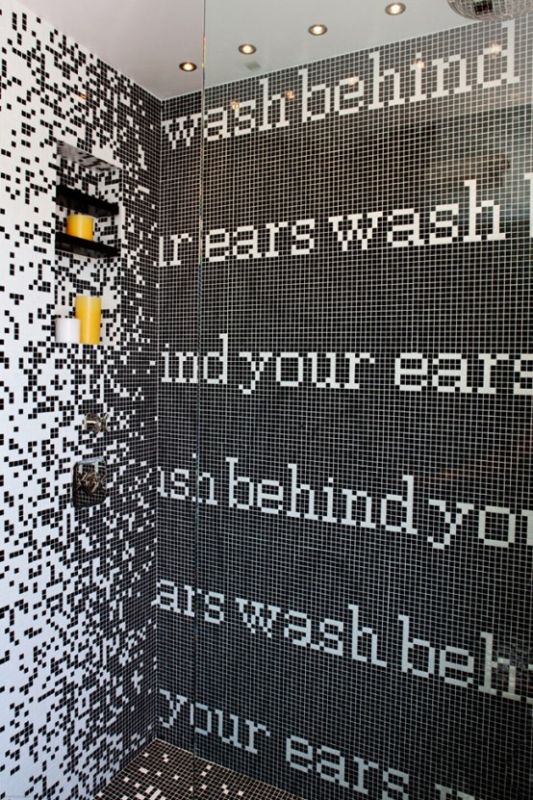
A house I visited recently in Portugal had tiles all along the hall wall up to the dado rail. Not only did this add colour and interest to a boring, functional space, but it’s a totally practical idea as you can just wipe them down. This will instantly end that permanently scuffed look common to most halls that comes from small children and dogs brushing past. If you do nothing else interesting with tiles – think about that as a practical, and pretty, solution.

If you want to give the impression of height, there’s no reason why the splashback has to stop a foot above the basin. Keep it going as high as you like and create a real focal point in the room. This is what I did in the tiny shower room in our house
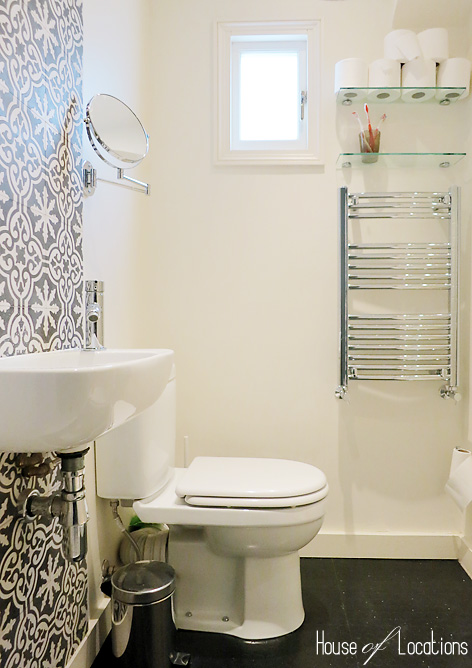
Another suggestion is to not use tiles where you might expect to find them. So, if you have put them in the hall, think of using glass in the bathroom as a splash back for the shower.
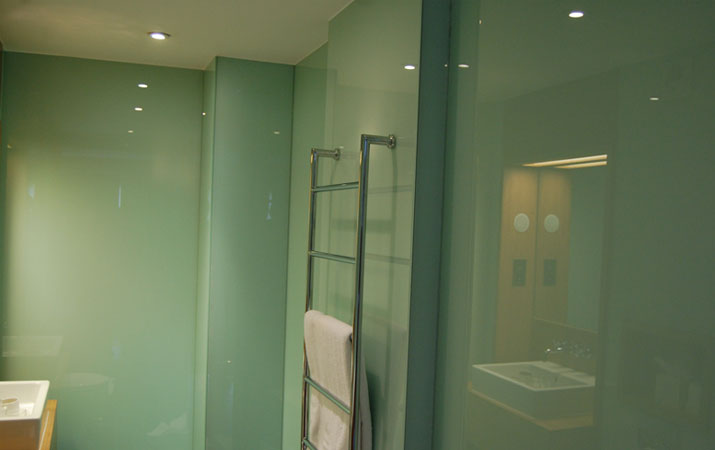
You can paint the wall a really bright colour behind it, or use wallpaper even draw your own designs.
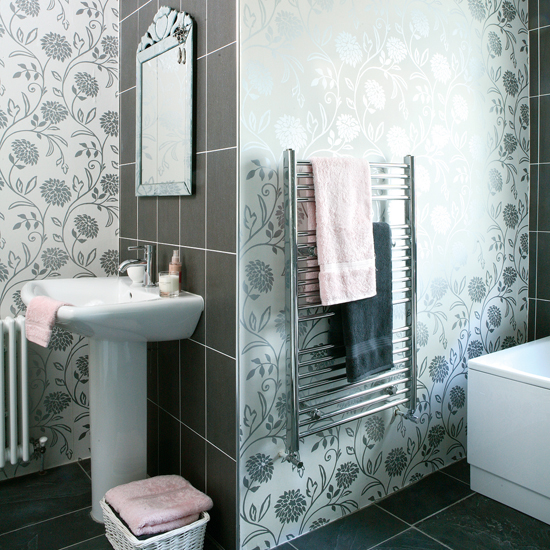
For the really modern among you, consider using mirrored mosaic tiles to create a fabulous pixellated reflection of whatever is on the worktop in front.
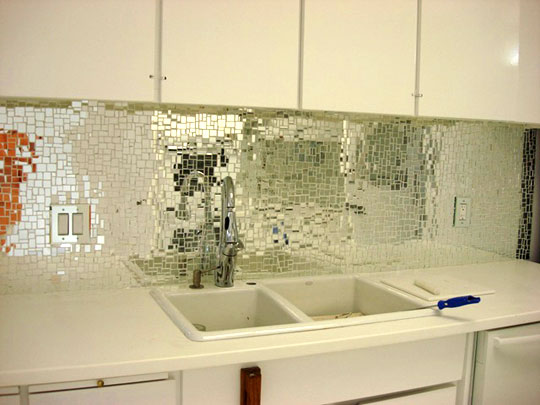
DIFFERENT TYPES OF TILES
Ceramic and porcelain tiles are made from clay and are very hard wearing, making them a practical choice for bathrooms and kitchens and areas of heavy traffic. The types of glaze and finish is increasing and improving all the time. Porcelain tiles are particularly good if you like the look of natural stone but either can’t afford it, or don’t want the upkeep as it will be more durable and resistant than its natural counterpart.
Marble, granite and limestone are all very expensive and and can stain but they do look fabulous. There are various treatments available to protect them from oil and water-based spills and they come in a wide range of natural colours.
Mosaic can be made from either natural or ceramic stone. For larger areas you can buy them attached to a net which makes them easier to attach, or you can really create your own wall art and stick them on individually. On a floor, the large amounts of grout will mean that it is less slippery when wet than larger tiles, but grout gets dirty and is harder to clean so you will have to weigh up your priorities.
Slate is more affordable than the other forms of natural stone and you don’t have to be restricted to black or grey. It also comes in shades of pink and green and its rough surface means it’s great at hiding the dirt and needs almost no looking after.
Glass tiles are becoming more and more fashionable thanks to the large range of colour and surface finishes. It’s expensive but will be stunning in a small area and can really make a statement in an otherwise minimalist room.

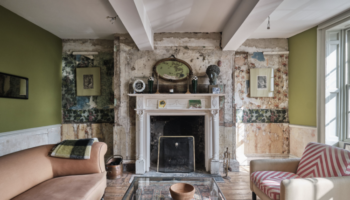
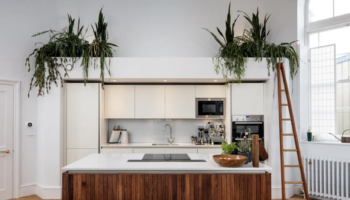
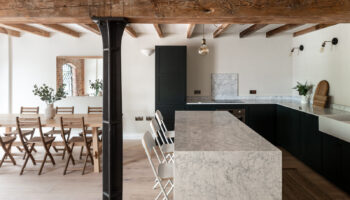
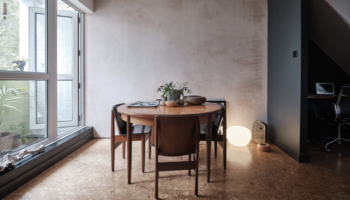
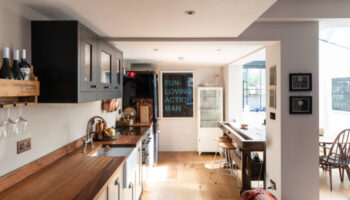
Hi, Where can I buy the mirror mosaic tile splashback as in the picture of the kitchen ?
You don’t say where you are. Assuming it’s UK then here is one place. You can just google mirror mosaic splashback tiles.
Hi – I love the picture of the bathroom glass splashback for the shower in the pale green. Do you happen to know what RAL shade was used as I would love to try a sample for my bathroom? Thanks
It’s a gorgeous colour isn’t it. I’m afraid I don’t. The easiest thing would probably be to pick up a few Dulux colour charts and see if you can find one that’s close. You could try printing the image, if you have a colour printer, and take it to a paint matching store.